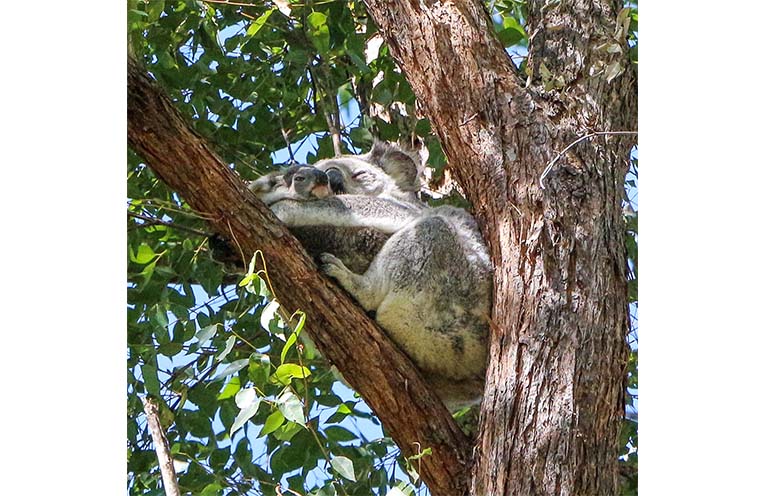
MORE than 60 wild koalas, including several joeys, have been discovered living at Bootawa Dam, to the delight of local ecologists.
With the koala declared an endangered species along much of the east coast of Australia, MidCoast Council ecologists have been mapping populations in the wild as part of the NSW Government-funded Koala Safe Spaces program.
 Advertise with News of The Area today.
Advertise with News of The Area today.It’s worth it for your business.
Message us.
Phone us – (02) 4981 8882.
Email us – media@newsofthearea.com.au
Thermal drone surveys revealed more than 60 koalas using the Bootawa Dam site.
That equates to about one koala for every 2.5-hectares of land.
While koala density in the wild varies, the koala population on the dam compound is about seven times higher than the average density found within the MidCoast.
“We are investigating the area to better understand why the dam holds such a large koala population and how this knowledge could be applied,” said MidCoast Council Manager of Natural Systems, Gerard Tuckerman.
“We know there’s a lot more work to do so that koalas can thrive in the area.
“In particular, we are working with local landholders to create corridors so that koalas can move safely between habitats.
“But the existence of a safe space at Bootawa is a very encouraging start.”
The Bootawa dam is within an area known as the Kiwarrak Area of Regional Koala Significance.
There were already a number of trees on the property that are favoured by koalas, including tallowwood, grey gum, forest red gum, and grey box.
Council has been enhancing the land for koalas by weed removal and selective tree planting as well as progressively replacing some former hardwood plantation areas with diverse native forest dominated by koala feed trees.
“This recent data find will allow us to track changes in the population over time and measure the success of our conservation actions as well as the impacts of major events such as drought or fire,” explained Mr Tuckerman.
“People in the area have a strong affinity with koalas, especially the traditional owners of the land, the Biripi people.
“The projects we are undertaking have built on and supported work that was being done in the area by community members.”
